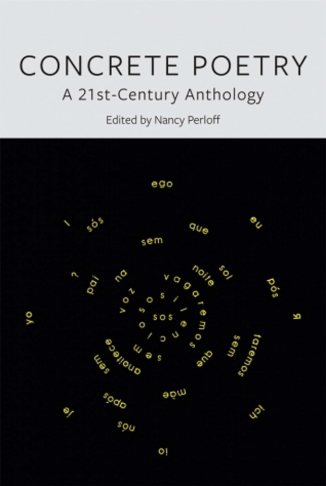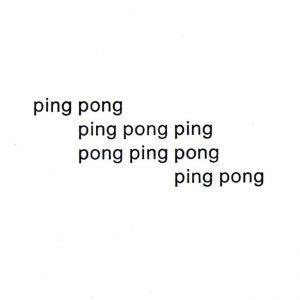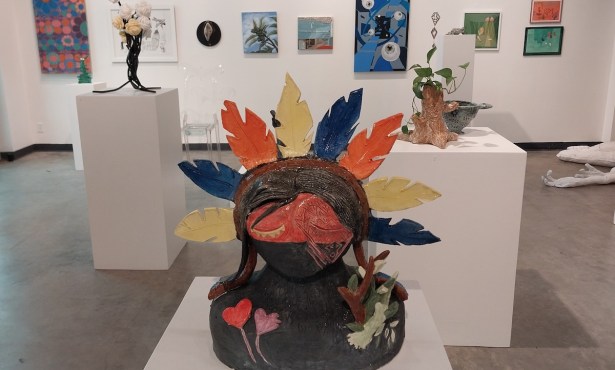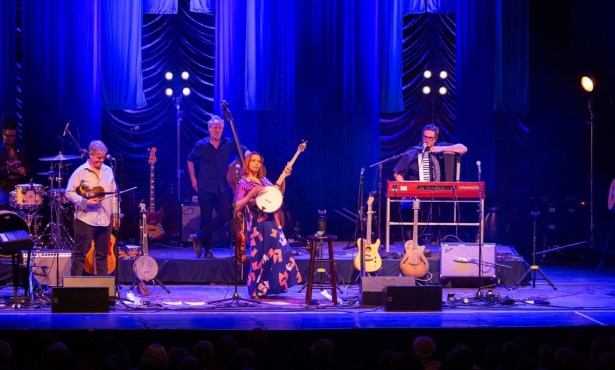Review | ‘Concrete Poetry: A 21st-Century Anthology,’ Edited by Nancy Perloff
An Examination of Functional Form

Compare an accomplished short poem of several hundred characters — say Seamus Heaney’s “Wedding Day” — with just about any concrete poem of the same length, and you’ll quickly realize what the former has to offer that is missing from the latter: the use of sound and imagery to create a clear narrative with a distinct and deliberate movement from beginning to end. In contrast, concrete poetry, as editor Nancy Perloff notes, quoting from a Yale “Symphosymposium,” insists that “‘language has a visual dimension and…the actual ‘look’ of a poem on the page determines, at least in part, its meaning.’” Rosemarie Waldrop sums the art form up as follows: “ Concrete poetry is a revolt against the transparency of the word.” In short, concrete poetry is an in-your-face rejection of poems like “Wedding Day,” and a reader’s response to Concrete Poetry: A 21-st Century Anthology will depend a great deal on how they feel about such a rejection. Here, for instance, is the Swiss poet Eugen Gomringer’s famous “Ping Pong”:

Each poem in the anthology is accompanied by Perloff’s notes at the bottom of the page, and in this instance she writes: “Repetition highlights the sonic play of ‘Ping Pong.’ We hear the percussive, alliterative p’s and alternating i’s and o’s, coupled with the repeated final alliterative ng’s. Focused on both forward and backward readings, Gomringer shifts from the symmetry of two to the asymmetry of three by adding ‘ping’ to the end of one line and ‘pong’ to the beginning of the next. Each instance briefly complicates the clarity of ‘ping pong.’”
Your response to the poem, and Perloff’s gloss, should pretty reliably indicate how likely you are to enjoy this book.
On the one hand, the poem itself cleverly plays with its very limited elements: two words that differ only in their vowel. The visual layout also reflects the action of a game of ping pong, and the sounds, as Perloff suggests, are onomatopoetic — and then some. Her analysis of the poem is clear and well-argued, and she’s admirably restrained in not claiming too much for the piece.
And yet “Ping Pong” might reasonably strike someone as being too silly or simplistic to merit much comment. Yes, the poet has arranged his words in a way that they “say” something, but mightn’t anyone with a modicum of creativity come up with something similar on a rainy day?
While I sympathize with those inclined to mock concrete poetry’s pretensions, I found myself returning with pleasure to the book’s frequently full-color plates in the same way I would revisit the catalog of an intriguing art exhibit. In fact, by propping the book open and moving away until the words themselves begin to blur, it becomes obvious that the arrangement of the letters on the page is just as important as what they actually say.
Among the most inventive uses of the form in the anthology are Scottish poet Ian Hamilton Finlay’s “Cork net,” a spiral of words alluding to “the corks that hold up fishing nets pulled by trawlers,” and his “Ajar,” a single word poem that “explores the effects of typography on signification…by repeating ‘ajar’ and placing its letters on shifting diagonals.”
Japanese poet Sei’ichi Niikuni’s “Window” uses the repeated characters representing “head” and “neck” at the top of a building made of kanji, the “eye” characters represents the windows, and the “‘two legs’ in the verb ‘see’ visualize people entering and exiting the building.” In American poet Susan Howe’s “type-collages,” she types out diary entries from Hannah Edwards Wetmore, the younger sister of the fiery early American preacher Jonathan Edwards, then “reproduces the entries photographically, creates her own transcriptions, renders them in different typefaces, prints them out, and cuts and tapes the printed text into collages.”
In re-seeing a subject that many believe had its heyday in the 1950s, 60s and 70s, Perloff, who is a musicologist as well as a curator at the Getty museum, opens up a wider world than those of us largely unfamiliar with concrete poetry might have expected. Yes, the anthology contains “Ping Pong” and Mary Ellen Solt’s “Moon Shot Sonnet” and “Forsythia,” but missing is perhaps the most iconic concrete work, Reinhard Döhl’s “Apfel.”
Instead of simply reprising “Concrete Poetry’s Greatest Hits,” Perloff’s anthology covers a wide range of formal approaches and aesthetics, and we are introduced to work from throughout Europe and North America, as well as important poetry from Japan, and especially, Brazil, where the poets associated the Noigandres group, among other innovations, made poetry by “pursuing an analogy between musical instruments and components of language.”
The poet whose work I miss most from the the book’s “Postlude” section, which consists of “a few contemporary poets who represent the varied legacies of the concrete movement,” is Douglas Kearney, whose poems like “Afrofuturism (Blanche says, ‘Meh’)” and “…a ship crashes down…” insist on the same careful reading as any primarily textual poem. If concrete poetry has a future outside of specialist groups and museum exhibitions, Kearney, whose prose collection Optic Subwoof articulated his many concerns and ambitions in the field, will surely play an important role.
This review originally appeared in the California Review of Books.




You must be logged in to post a comment.